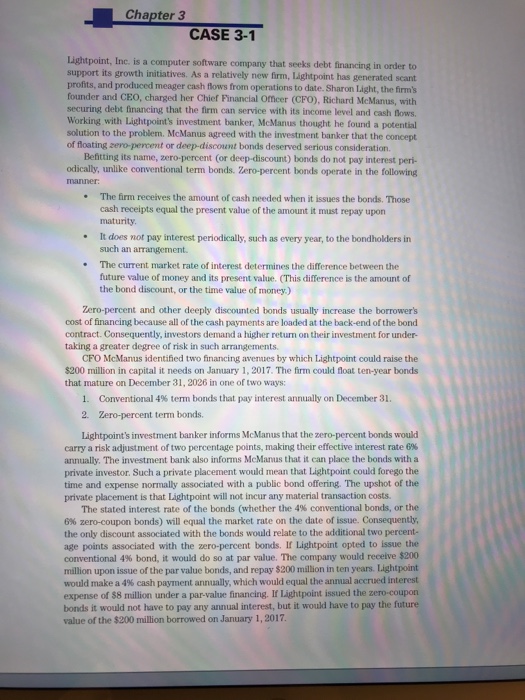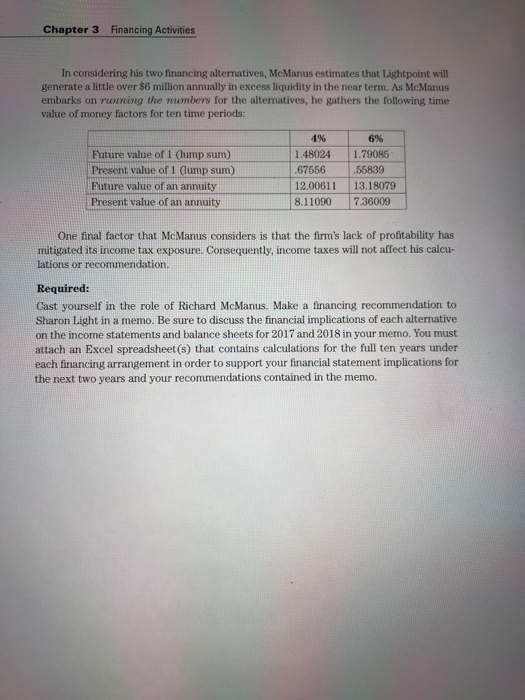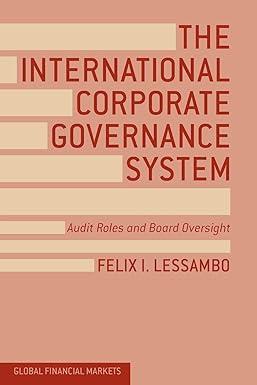CASE 3-1 Lightpoint, Inc. is a computer software company that seeks debt financing in order to support its growth initiatives. As a relatively new firm, Lightpoint has generated scant profits, and produced meager cash flows from operations to date. Sharon Light, the firm's founder and CEO, charged her Chief Financial Offcer (CFO), Richard McManus, with securing debt financing that the firm can service with its income level and cash flows. Working with Lightpoint's investment banker, McManus thought he found a potential solution to the problem. McManus agreed with the investment banker that the concept of floating zero-percent or deep-discount bonds deserved serious consideration. Befitting its name, zero-percent (or deep-discount) bonds do not pay interest peri- odically, unlike conventional term bonds. Zero-percent bonds operate in the following manner The firm receives the amount of cash needed when it issues the bonds. Those cash receipts equal the present value of the amount it must repay upon maturity It does not pay interest periodically, such as every year, to the bondholders in such an arrangement. .The current market rate of interest determines the difference between the future value of money and its present value. (This difference is the amount of the bond discount, or the time value of money) Zero-percent and other deeply discounted bonds usually increase the borrower's cost of financing because all of the cash payments are loaded at the back-end of the bond contract. Consequently, investors demand a higher return on their investment for under- taking a greater degree of risk in such arrangements CFO McManus identified two financing avenues by which Lightpoint could raise the $200 million in capital it needs on January 1, 2017. The firm could float ten-year bonds that mature on December 31, 2026 in one of two ways: Conventional 4% term bonds that pay interest annually on December 31 2. Zero-percent term bonds. Lightpoint's investment banker informs McManus that the zero-percent bonds would carry a risk adjustment of two percentage points, making their effective interest rate 6% annually. The investment bank also informs McManus that it can place the bonds with a private investor. Such a private placement would mean that Lightpoint could forego the time and expense normally associated with a public bond offering. The upshot of the private placement is that Lightpoint will not incur any material transaction costs. The stated interest rate of the bonds (whether the 4% conventional bonds, or the 6% zero-coupon bonds) will equal the market rate on the date of issue. Consequently, the only discount associated with the bonds would relate to the additional two percent- age points associated with the zero-percent bonds. If Lightpoint opted to issue the conventional 4% bond, it would do so at par value. The company would receive $200 million upon issue ofthe par value bonds, and repay $200 million in ten yearsLight point would make a 4% cash payment annually, which would equal the annual accrued interest expense of $8 million under a par-value financing. If Lightpoint issued the zero-coupon bonds it would not have to pay any annual interest, but it would have to pay the future value of the $200 million borrowed on January 1,2017








